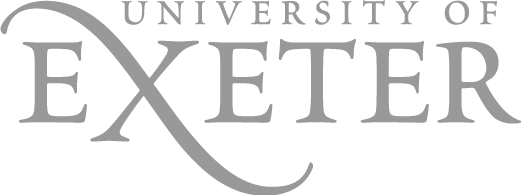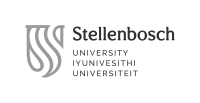F1822 Early Modern Print Culture (in the Digital Age)
Professors
Schedule
Course description
In this class we will look at the way our literary heritage is preserved and transformed through its remediation in digital form, through an introduction to the “printing revolution” in the Renaissance and the way printed texts are now preserved and curated online. In the twenty-first century we are able to access high-quality digital facsimiles and transcriptions of early printed texts on paying websites such as Early English Books Online (https://eebo.chadwyck.com/) or on
the open-access websites of libraries such the British Library, and the Beinecke Library at Yale. The class will thus have two threads: at the same time as studying the impact of print on literacy, reading practices and genre in the fifteenth and sixteenth centuries we will consider the impact of the “digital revolution” on the way these printed texts are understood and accessed by scholars and students today. Since the class is taught in English the early modern printed texts we will look at in detail will mainly be English language texts. However since Venice was one of the principal centers of the European printing trade in the fifteenth and sixteenth centuries, we will compare the development of printing in England and Italy, with particular focus on Venice. We will discuss both the shift from manuscript transmission of texts to print circulation, and the fixing in print (and subsequent wide circulation) of traditions that had previously been predominantly oral, such as the singing of ballads, the performance of plays, and the preaching of sermons.
The “remediation” of oral genres as printed texts is thus an issue in the early modern period, and we will compare this with the “remediation” of printed texts as digital media in the twenty-first century. Such a “re-purposing of old media in new media” (Kichuk 2007) may seek to reproduce the printed text as faithfully as possible, or it may “improve” on the original in order to provide easier access, include a search function and/or transcription, or comparison with multimedia
files (e.g. of musical settings of songs). The funding available for such digital remediation projects must also be factored into our discussion, and in the class we will compare the economic model of a major commercial scholarly site, Early English Books Online, with smaller, more focused projects where the content (facsimiles and transcriptions) is almost entirely provided by volunteers. In comparing these models we will discuss the advantages and disadvantages of internet “crowd-sourcing” to such a project, and students will have the opportunity to contribute to a small online digitization project by transcribing and/or proofreading several pages of early modern English printed prose.
Learning outcomes
• Students will acquire an overview of the genres of printed texts circulating in the early modern period.
• Students will acquire an understanding of the practical skills involved in printing.
• Students will be able to assess the online remediations of early modern texts and the resources required to produce them.
• Students will be able to proofread and correct a short text coded in XML.
Syllabus
Week 1: Introduction. “The Printing Press as an Agent of Change”
_Reading: Extracts from Elizabeth Eisenstein The Printing Press as an Agent of Change (1979)
Week 2: Print culture and lyric poetry
_Tottel’s Miscellany (1557) (Early English Books Online)
_Arthur Marotti, “Print and the Lyric” in his Manuscript, Print and the English Renaissance Lyric (1995)
Week 3: Preaching and print: the early modern sermon
John Donne, Five Sermons Upon Special Occasions (1626)
Virtual Paul’s Cross Project
Arnold Hunt, “From Pulpit to Print,” in his The Art of Hearing (2010)
Week 4: The sound of print: broadside ballads and songs
The English Broadside Ballad Archive
The Making of a Broadside Ballad
Christopher Marsh, “"The Sound of Print in Early Modern England: the Broadside Ballad as Song" in Crick and Walsham, eds The Uses of Script and Print, 1300-1700. CUP, 2004.
Week 5: Print and the stage: playtexts
Shakespeare in Quarto (The British Library)
Lukas Erne, Extracts from Shakespeare as Literary Dramatist. 2nd ed. CUP, 2013.
Week 6: Emblem books in Italy and England
Alciato at Glasgow
The English Emblem Book Project
Extracts from Michael Bath Speaking Pictures: English Emblem Books and Renaissance Culture (1994)
Week 7: Digital Remediation of early modern printed texts
Early English Books Online
Diane Kichuk, “Metamorphosis: Remediation in Early Modern English Books Online (EEBO).” Literary and Linguistic Computing 22.3 (2007).
Week 8: Transcription and proofreading in XML
“A gentle introduction to XML” The Text Encoding Initiative
John Donne Society Digital Prose Project
Week 9: Crowdsourcing and the Digital Humanities
Tim Causer and Valerie Wallace, “Building A Volunteer Community: Results and Findings from Transcribe Bentham” Digital Humanities Quarterly 6: 2 (2012)
Week 10: Hypertext
Jerome McGann, “The Rationale of Hypertext”
Week 11: The Print Revolution and the Digital Revolution
Extracts from Marshall McLuhan, The Gutenberg Galaxy: The Making of Typographic Man (1962)
Peng Hwa Ang and James Dewar, “The Cultural Consequences of Printing and the Internet” 2007)
Week 12: Conclusions: The Ideal Digital Interface
Evaluation
Students will be assessed on three different types of contribution to the class:
Short presentation before midterm (20% of final grade). Students will give a short presentation in class (maximum 10 minutes) on an early printed text (available online) giving information about the text, its context and influence. The text may be in any language, but should have been printed before 1700.
Digital editing assignment (20% of final grade). In the second half of the course students will undertake the proofreading of several pages of an online edition of an early modern text coded in XML. (Students with a background in IT may request a more challenging assignment.)
Final essay (40% of final grade). Students will write an essay (c. 6-8 pages) reflecting on the way one or more early printed books have been remediated online.
Class participation in discussion and performance workshops will count as 20% of the grade.
No previous knowledge required.
Further reading
A Companion to Digital Literary Studies. Blackwell, 2008. Available online.
The Cambridge History of the Book in Britain CUP, 1999, especially volume 4.
Julia Crick and Alexandra Walsham eds The Uses of Script and Print, 1300-1700. CUP, 2004
Digital Humanities Quarterly
Adam Fox, Oral and Literate Culture in England 1500-1700. OUP, 2001.
Journal for Early Modern Studies, Special Issue: The Digital Turn Volume 13, Number 4, Fall 2013.
Jerome McGann, ed. Online Humanities Scholarship: The Shape of Things to Come. 2010.
Susan Schreibman et al. eds, A New Companion to Digital Humanities. Chichester: John Wiley, 2016.
Peter L. Shillingsburg, From Gutenberg to Google: electronic representations of literary texts. CUP, 2006


















